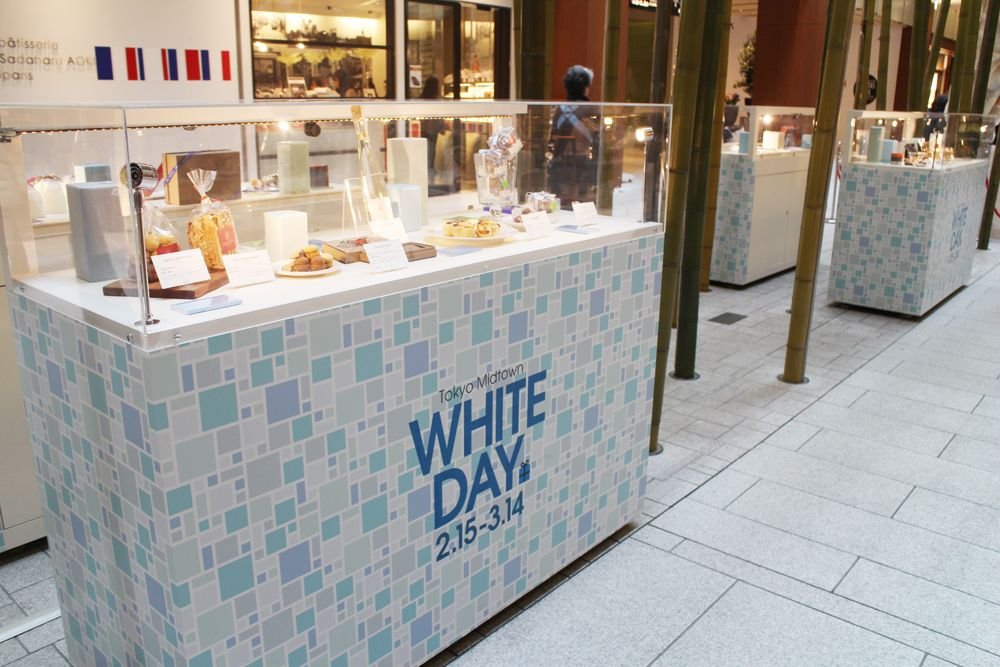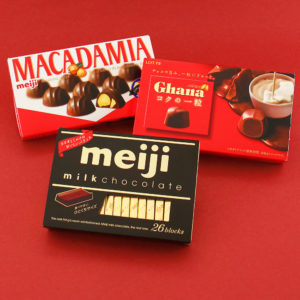Japanese Holidays
now browsing by category
White Day in Japan


Copyright Japan Today
Japan has had a unique way of celebrating Valentine’s Day since it arrived in the late 1950s. Unlike America where it is a general romantic day for both sexes marked by roses, boxes of heart shaped chocolates and expensive dinners, in Japan it is a day exclusively for women to show their affections for the men in their lives by giving them chocolates.
It does not necessarily have to be romantic in nature, in fact, you are expected to give chocolate to friends and co-workers as well. Referred to as giri-choco (obligation chocolates). Although home made chocolate (honmei choco) and expensive boxes are reserved for your husband, boyfriend or the man whose affection you are seeking.
I have an entire post about Valentine’s Day here.
Today we are talking about a holiday unique to Asia that began in Japan in the late 1970s called White Day. It occurs on March 14th and is for the men to reciprocate to the women in their lives with a gift worth more than what they were given on Valentine’s Day.

Copyright ishimura.co.jp
The generally accepted beginning of the holiday, according to the United States Department of Commerce, starts with confectionary shop Ishimura Manseido (石村萬盛堂) in the Hakata region of Fukuoka.
Founded in 1905, the shop specializes in marshmallows. Especially a product called Tsurunoka, a sweet yellow bean paste filled marshmallow. But for White Day they swapped out the bean paste for chocolate and with the slogan “I would like to take the chocolate I received from you, and wrap it with my white heart” the first “Marshmallow Day” (マシュマロデー) was held in 1977.

Marshmallow Day didn’t catch on however until the National Confectionery Industry Association (全国飴菓子工業協同組合) established it as White Day, an “answer day” or “reply day” to Valentine’s Day in 1978 with the catchphrase “White Day is a sweet day.”
On White Day a man is expected to reciprocate the gifts he was given on Valentine’s Day 3 or 4 fold. Like Valentine’s Day these gifts do not have to be romantic in nature. While they are often a white chocolate or marshmallow gift it can be everything from sweets to clothing and jewelry. A popular gift today is pudding (or purin プリン) bought from famous shops.

https://recipe.monteur.co.jp/
According to Kaori Ishida from The Japan Times “Most women know which shop carries the best pudding and it goes without saying that the packaging must be Instagrammable. Bonus points if the guy got in line to purchase the pudding. Extra bonus points if the guy took a selfie of himself waiting in line, and then sent it to his girlfriend whereupon she can post that on Instagram as evidence of how much he loves her.
This March 14th whether the gift you receive is big or small, Instagrammable or not, today maybe you might buy someone a pudding, white chocolate or even a marshmallow treat for that tiny shop in Fukuoka who started a cultural phenomenon now celebrated throughout Asia and the world.
Hina Matsuri/Momo no Sekku


Hina Matsuri snuck up on me this year. There has been so much going on! So I admit this is a bit late!
Hina Matsuri (aka Girl’s Day aka Peach Blossom festival) happens every year on March 3rd.
Peach Blossoms have long been associated with girls because of their pretty and dainty appearance and it is a day for families to celebrate their daughters and wish them healthy, happy and prosperous lives.

Families with little girls begin the preparations for these festivities weeks in advance when Hina Dolls are brought out of storage and placed on display in the middle of February.
Although some families may display only one or two dolls most people are familiar with the elaborate displays of multi-tiered platforms covered in red and gold with a full court of royal dolls dressed in the elaborate kimono of the Heian Era. Accessories can include miniature food, furniture, animals, lamps and very often, peach blossoms.
While these sets are traditionally family heirlooms they can now be bought with a more modern twist to the dolls costumes.

Hina Matsuri dates back over 1000 years and is believed to have originated from the Chinese tradition in which you transferred your misfortunes to the dolls and then released them to the rivers to send the bad luck away. At the time the dolls were made of straw or paper not porcelain.
In some rural areas of Japan, you can still find this custom, called hina-okuri or nagashi-bina, in which people float paper dolls down the rivers.
According to Wikipedia:
“The earliest record of displaying the dolls as part of the Peach Festival comes from 1625, for Emperor Go-Mizunoo’s daughter Oki-ko. Imperial court ladies set up equipment for her to engage in doll play (雛遊び, hina asobi). After Oki-ko succeeded her father as the Empress Meishō, Hinamatsuri legally became the name of the holiday in 1687.”
Special food and treats are also eaten at this time, dyed in the colors of spring and the peach blossom, which blooms a vivid pink.
The one that is most well known though is Hishi Mochi – a tri-coloured sweet in the colors of the festival. Pink for the peach blossom, white for snow and green for the coming spring. A Hina Ningyo (Hina doll) set will almost always include a representation of this amongst the dolls.

Shirozake a sweet white rice fermented drink representing purity and Hina Arare a crispy Rice snacks also in pink, white and green and dusted with sugar are also popular treats.
The day after the festivities the dolls must be returned to storage or it is believed your daughter will have a delayed marriage. Though some larger hotel and department store displays remain up til the 6th or 7th.
Valentine’s Day in Japan

Let’s talk about Valentine’s Day!
Not the typical American holiday of flowers and chocolates and expensive dinners. We’re talking about the Japanese take on the time honored holiday of love. (Which is as passionately loved and hated there as it is here.)
In Japan, Valentine’s Day is almost exclusively a day for women to give chocolates to male friends, family and colleagues, as well as husbands, boyfriends, and those they hope might become their boyfriends, should they be impressed by the fine chocolates they are being given.
There are actually two types of chocolates given out on Valentine’s Day.
Giri-choco and Honmei-choco.
(A third type of chocolate is a more recent trend and this is Tomo-choco. Tomo means friend in Japanese, and Tomo-choco are for female friends in a woman’s inner circle.)
Giri means “obligatory” and so Giri-choco are often small inexpensive gifts given to colleagues, family and male (non-romantic) friends.
Honmei-choco are the special chocolates that one makes or purchases for a love interest. They are normally either far more expensive than the Giri-choco or a lot more effort has been put in to their making.
In fact the month before Valentine’s Day shops are often filled with the accessories, supplies and gift wrap that you need to make homemade chocolates and give them that special touch.
Men are not expected to reciprocate til the following month on White Day. A holiday started by a Japanese confectionery and mainly to be found in Asia.








 D5 Creation
D5 Creation